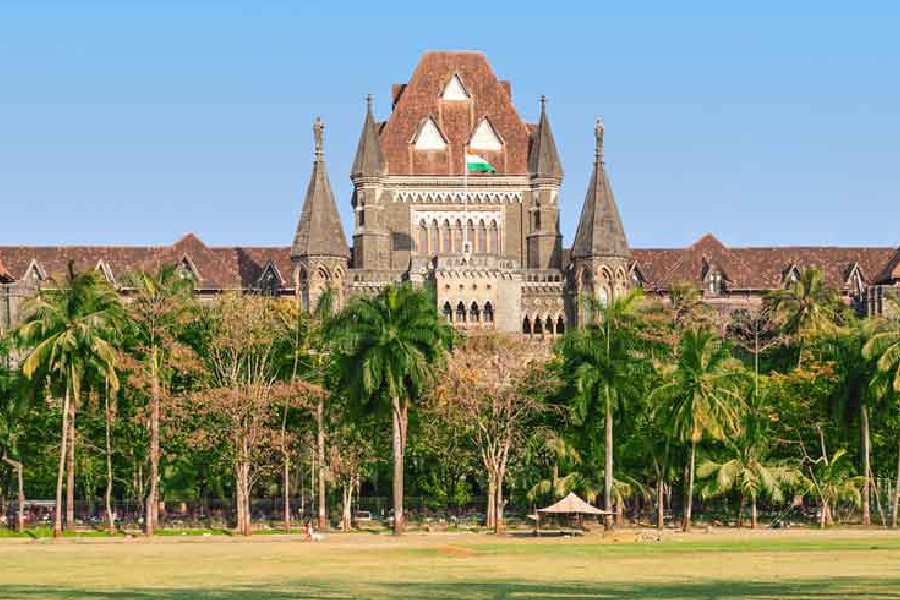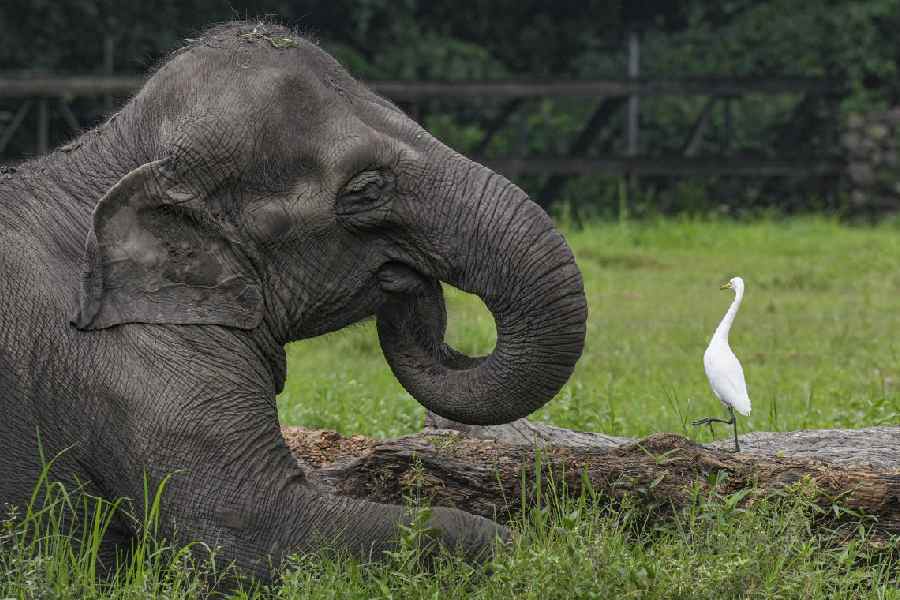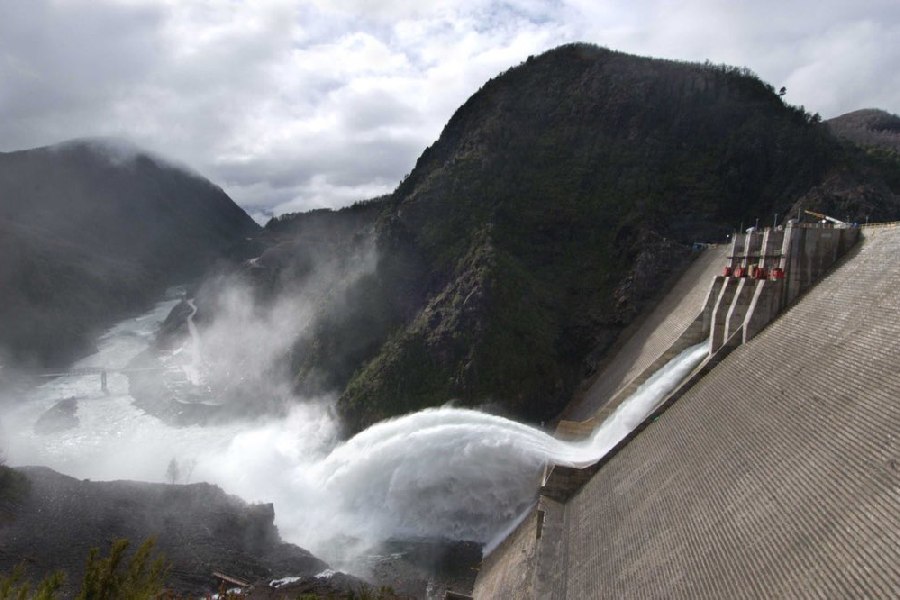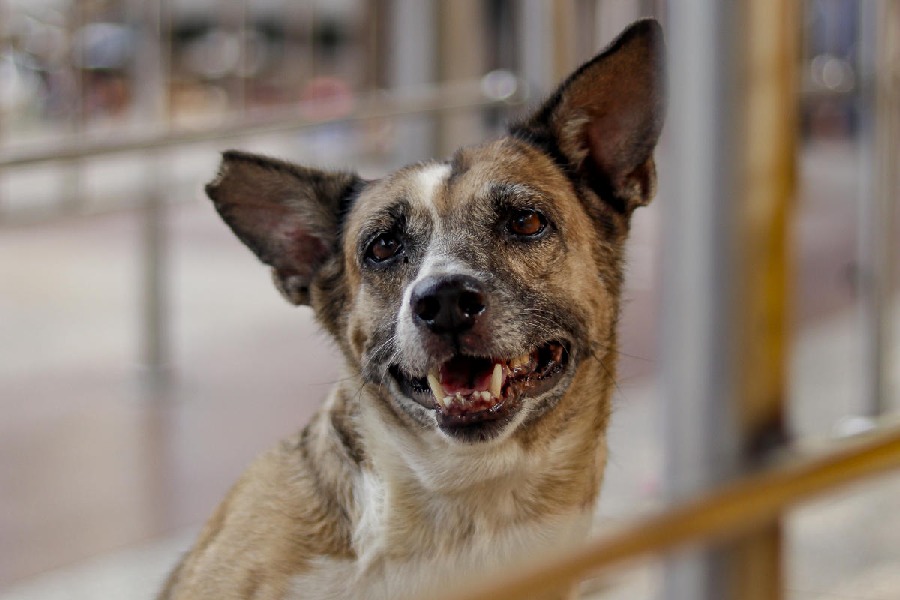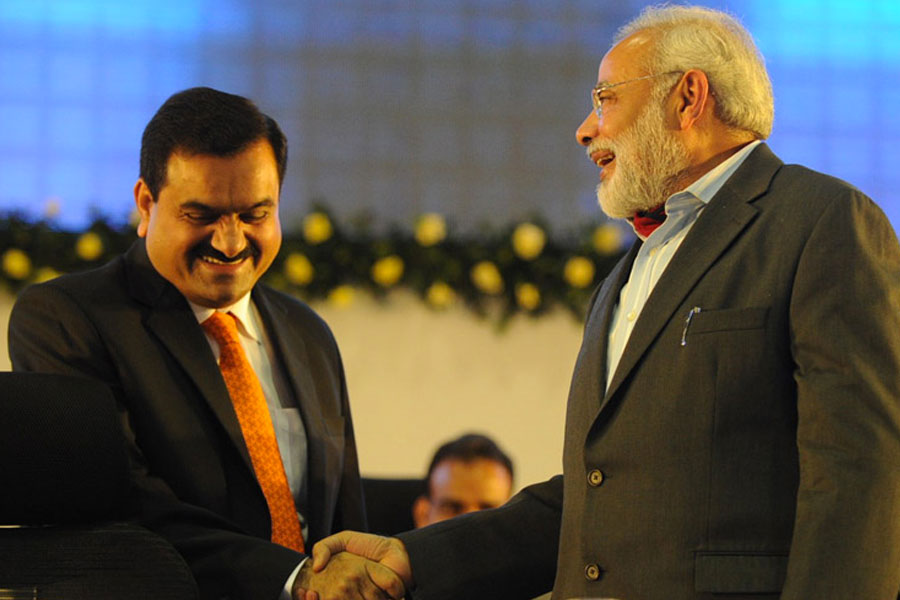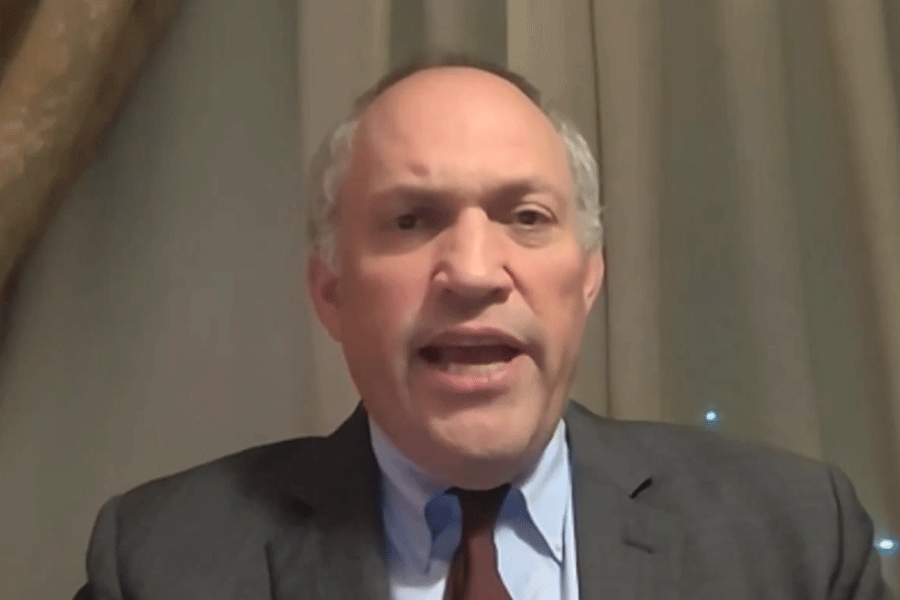 |
On a rainy April afternoon, I find myself doing anthropological field-research on that peculiarly British phenomenon, the queue. In the courtyard of the Royal Academy people have formed a snake, guided by nothing more than a few plastic cones on the ground. Somehow, civility and common sense puts everyone on the same page, on the same programme: without fuss, people join the queue to shuffle forward before making a U-turn around a cone, then all the way back to the entrance arches to the next cone before doubling back, and so on. No one tries to jump the queue, no one tries any shortcuts. When somebody needs to go get a coffee or a snack, they nod to the person just behind them before heading off to the stall. Upon their return, space is made for them to re-join the line. We are all waiting for our turn to buy a ticket to A Bigger Picture, the extensive new exhibition by David Hockney. “Yesterday the queue took about three hours,” a friend has cheerfully informed me. Despite the fact that today is the penultimate day of this massively successful show, the queue isn’t that long — I reckon it will only take an hour. In the meantime, I watch the people. One old gent is scribbling in something called a ‘Pucca Pad’. Tourists are pointing their digital cameras into the rain, photographing the façade of the venerable old pile. A woman is reading a book called Kunst — the story of the YBAs. The pun, using the German word for ‘art’, which is very close to the English slang for a human body part, was a label given to the motley group thrown up by the early 1990s, the ‘Young British Artists’ who’d stormed billionaire collector Charles Saatchi’s wallet and through him the high bastions of international post-modern, conceptual art. Some of this group were artists of great talent while others became as famous for their mildly shocking party antics as for their so-called ‘work’.
David Hockney was an enfant terrible from an earlier era, when his frank depictions of homosexual desire sometimes drew more comment from the mainstream than his fantastic imagination and control of line and colour. Now Hockney is the painter laureate of the country, one of the last survivors of that great post-war generation of artists that included Bacon, Freud, Caulfield, Kitaj and Hodgkin, one of the true Brit big-hitters who, in the 1970s and 1980s, elbowed out the Americans who had, in the 1950s, elbowed out Picasso and his many acolytes. Compared to the other Brit big dadas, Hockney’s great, highly legible line and his mastery of bright colour have helped his work cross over to the popular imagination and he is now one of the most reproduced, calendared, t-shirted, coffee-mugged painters in the world. The long queues are partly a testament to this. A Bigger Picture here at the Royal Academy is a vast series of landscapes that Hocku-da has painted over the previous decade — a sequence of colourful love letters to his native Yorkshire landscape. The mix of Hockney’s reputation and that other great enduring British obsession, with the native skies, fields and trees, has meant that this exhibition is a runaway hit.
As I reach the orderly throng at the counter I feel the need to ask if the ticket is a ‘timed’ one. “No, sir,” comes the cheerful reply that’s clearly been deployed many times, “you can stay as long as you like, until we close in the evening.”
Such is the crowd that at first you get to smell Hockney’s paintings more than see them. Slowly, as you get the rhythm of the crowd, you find gaps which allow you to step back and get a wider view. There are a few landscapes from earlier periods, crazy, beautiful stuff that he does in the late 1950s and 1960s, the great love affair with America and American light and colour that begins in the 1970s, the massive paintings of the canyons that are the precursors to this new body of work.
Here are four large ‘grid’ paintings of the same row of trees in the four different seasons, over there is another grid of canvasses across which is laid out a mosaic of the colourful Yorkshire Downs, the grey highway zig-zagging, jumping across the edges of the canvasses. Slowly, a wall of varied landscapes comes into view, oils, mostly made across one summer, the bright yellows and oranges bouncing off the sharp blue and almost childlike white clouds. Here is a less successful wall, of watercolours, the muted colours taking some damage from the bright oils on the adjacent walls. Then there are six renditions of the same view: two paths crossing in a forest, the summer foliage of loud, talkative greens, the winter interlacing of bare branches, the tree trunks a bright green, the ground a carpet of gold and brazen rust in autumn, the light clinging to things, cutting different shapes at different times of the year.
It’s almost too much. You can see Hockney’s unmistakable line, the crazy colour combinations, the humour in the juxtapositions, and you can also see borrowings from people as different as Matisse and Lowry, but his main quarrel, the main charcha is with Monet and Van Gogh. Where this works, where Hockney takes the business of looking at nature and rendering it and explodes the scale or the normally expected mark of the brush, the show is superb. Where he hangs yet another group of sub-Van Gogh or meta-Monet pictures, it disappoints.
The beauty and power of this show return to me about ten days later, while visiting another show by a big-name British artist. Confronted by the vacuous posturing of Damien Hirst’s mega-retrospective at the Tate Modern, you suddenly begin to miss the honesty and passion of Hockney’s lifelong struggle to bring pleasure to the eye. Hirst is first and foremost a brand builder, a marketeer who only occasionally trips into making work that moves us. If a board of colourful dots, some of them dripping into others, works at one level, the power of the idea is immediately diluted and re-squeezed ad infinitum ad nauseum by dozens of dot paintings with deeply pretentious names. If a sheep’s head in a formaldehyde tank begins to invoke something, it is rapidly drowned in repetitions of large sharks or cows and calves. If a display shelf lined with cigarette butts is interesting its repeat avatar in glittering gold plate is insulting, not just to a new viewer but to anyone who remembers older work in the same vein by real artists.
As I leave the museum, I tell myself it’s unfair to compare Hockney and Hirst, apples and oranges, and that perhaps Damien Inc should be looked at as a huge practical joke on the art world, as the mother of all pastiches, a running gag that has run for twenty years. Perhaps Hirst’s only real concern is to comment on the practice of contemporary art over the last fifty years. Crossing the river on the pedestrian bridge I see an old hobo sitting against the railings holding a guitar in his lap, a hat laid in front of him for coins. As I come closer I see that the guitar is battered and incapable of making any tuneful sound. There are only two guitar strings on the thing, the rest of the ‘strings’ are just that, frayed thin cords stretched across the neck that the old man flicks with a ball point pen, the black skin of his fingers gone grey in this cruel April. Up and down the space-age walkway, I can see other figures, proper buskers, a young man shaking out a shiny trumpet and, further away, a woman singing with a small CD player for backing music. I look at this crumpled yet hopeful beggar and there I see all of pastiche, all of quotation contained in that toneless scratching. It’s funny and it’s tragic in a way all of Damien Hirst’s golden glitter and slick patter can never touch.


